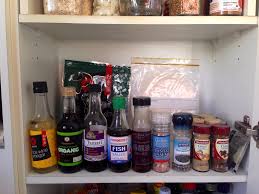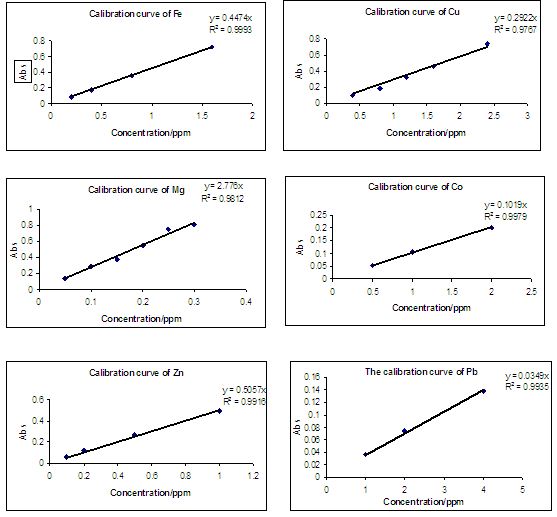Pulses are important sources of proteins, carbohydrates, dietary fibres, minerals and vitamins. It has been considered that pulses are the food grains to solve the protein malnutrition problem in Bangladesh. Moreover, pulses can provide a variety of health benefits such as reducing heart disease and diabetes. Pulses are already considered as an acceptable part of our diet and the practice of taking them with wheat and rice has been found to have a sound scientific basis. Pulses are the cheapest sources of protein, so they are considered as the protein of the poor, because most of the poor people of Bangladesh are not capable of taking costly animal proteins. Thus pulses are the essential components of the daily diets for many people of Bangladesh.
Spices may be either bark, buds, flowers, fruits, leaves, rhizomes, roots and seeds or the entire plant tops, which have been used for several purposes since ancient times. Spices are used in several ways for culinary purpose. Spices often improve color, aroma, palatability and acceptability of food because most of these are fragrant, aromatic and pungent. These are also used as preservative that kills harmful bacteria or prevent their growth. Moreover, natural food spices such as pepper and mustard have been reported to contain significant quantities of trace metals. Spices have also been recognized to have some medicinal properties due to their antioxidant and antimicrobial action. The spices are the main sources of carbohydrates, minerals, vitamins, and organic compounds having diverse functional groups. The trace metals and the medicinal compounds play vital role as structural components of metalloproteinase and enzymes in living cells. Different types of pulses and spices are produced in different region of Bangladesh. But the production is not sufficient to fulfill the requirement. Although, a proper statistics of production and consumption of pulses and spices is not available, it is true that a good quantity of pulses as well as spices is being imported every year to meet the huge demand of about 160 million people of the country.
Sauces are liquid or semi liquid preparation served with food principally to enhance its flavor, appearance or to make it more palatable. It is also an essential element in cuisines all over the world. The preparation of sauces is generally based on tomato, vegetables and various spices. So sauces are also good sources of carbohydrates, vitamins and minerals. Even though pulses, spices and sauces have many benefits, they can also contain some toxic metals derived from the environment of their production, processing and storage conditions. The amount of every such metal should be in certain range, otherwise beyond the range or deficiency of the essential substances in the body may disturb the biological balance and the system becomes unstable causing different type of diseases. Therefore, it is important to keep these metals in their proper ranges by personal initiative. This can be done by using a suitable diet list which can provide information about the metal contents of different foods.
Although many works about the content of the trace essential and toxic metals in these types of foods were carried out all over the world, it is very limited in this country particularly in Chittagong the people consumes large amount of pulses, spices and sauces. Since majority of people of our country take pulses every day, it is important to know the toxic metal contents in them, because little information is available about the safety of this foodstuff in respect to heavy metal contamination. Spices and sauces represent a small amount of the total food intake, but considerable levels of the toxic metals may occur in these foods when they are grown in contaminated soils or prepared in unhygienic places. In order to investigate the content of essential and toxic metals in widely consumed pulses, spices and sauces available in Chittagong, it is aimed to estimate the amount of Fe, Cu, Mg, Co, Zn, Pb, Cd, As, Cr and Ni. The daily intake of the metals from the foodstuffs were also calculated and compared with the recommended daily allowance of the metals.
Experimental
Sample collection
Pulses and spices were collected randomly from six different markets of Chittagong city area with adequate number of replicates. Their local names are identified and collected in accordance with their English and biological names (Table 4.1 and 4.2). A market survey was conducted for each group of samples to prepare a list of their names according to their popularity in the people of Chittagong port city. These samples were kept in polyethylene bags separately. Selected sauces were collected randomly from the chosen reputed companies.
Table 4.1: Bengali, English and Scientific name of the studied pulses
| Bengali name | English name | Scientific name |
| Chanar dal | Gram | Cicer arientum |
| Masur dal | Lentil | Lens Culinaries Medik |
| Khashari dal | Grass pea | Lathyrus Sativus L |
| Mung dal | Green Gram | Phaseolus aureus |
| Mator dal | Pea | Pisum Sativum L |
| Matur Shuti dal | Garden pea | Pisum Arvense |
| Sheem Beechi dal | Lablab | Dolichos lablab L |
| Falon dal | Cow pea | Vigna Ungniculata |
| Mash Kalay dal | Black gram | Phaseolus Mungo |
| Chatpotir dal | Pea | Pisum sativum |
Tab 4.2: Bengali, English and Scientific name of the studied spices
| Bengali name | English name | Scientific name |
| Kacha marich | Green Chili | Capcicum frutescens |
| Payage | Onion | Allium cepa |
| Rashun | Garlic | AlliumSativum |
| Adha | Ginger | Zingiber officinale |
| Zira | Cumin | Cuminum cyminum |
| Dhania | Coriander | Corriendrum sativum |
| Postadana | Poppy seed | Pastacia sera |
| Darchini | Cinnamon | Cinnamomum zeylanicum |
| Haldi | Turmeric | Curcuma longa |
| Lal marich | Red chili | Capcicum annum |
Sample preparation and digestion
The pulses and spices were washed with distilled water repeatedly to remove the unwanted particles. The washed and clean samples were dried at room temperature for 10 hours and ready for digestion. Sauces were taken for digestion as it collected freshly. 20-27 g of pulses and spices and 28-32 g of sauces were weighed and taken in a three neck round bottom flask and 50 mL of RD H2O was added to the sample. These were boiled for about four hours and then evaporated the solvent. At room temperature, 100 mL of 5:1 ratio of HNO3 and HClO4 for pulses and sauces were added to the boiled sample. In the case of spices 50 mL of the same ratio of HNO3 and HClO4 were added to the boiled sample. This was refluxed at 120-125 0C (20 hours) until a clear solution appeared. The volume of the solution has been reduced to about 25-35 mL by condensation. Some RD H2O was added to the solution and filtered through whatman-40 filter paper into a 100mL volumetric flask and made up to the mark with RD H2O. All the sample solutions under the present investigation were prepared in similar manner and stored at room temperature for spectroscopic measurement. A blank solution was also prepared for each group of sample by using all reagents except the sample.
Calibration curves
The following calibration curves were used for determination of concentration of the metals from the sample solutions.
Results and discussion
The concentration of some essential metals (Fe, Cu, Mg, Co and Zn) as well as some toxic metals (Pb, Cd, Cr, Ni and As) were determined in some popular pulses of Bangladesh by Spectrophotometric method. The content of the same metals in some common spices of Bangladesh were also determined by the same method. Sauces are consumed largely by the general people of Bangladesh as spices. Moreover, some common spices are used in sauce preparation. For this reason, we determined also the concentration of the metals in some sauces of six Bangladeshi brands for understanding the effect (if any) of the spices to the sauces as well as the quality of the sauces in terms of heavy metals. The estimated amounts of the essential metals in the mentioned foodstuffs are given in Tables 4.3, Table 4.4 and Table 4.5. The determined amounts of toxic metals in the same samples are presented in Table 4.6, Table 4.7 and Table 4.8. Triplicate measurements of the metals were taken from digested sample solution and their mean values are given in the respective Tables. The daily intake of the metals was calculated from the studied pulses and spices and the daily intake values are shown in the Figures 4.1 to 4.20. Besides this work metal to metal correlation in pulses and spices was determined and significant correlation was found between some metals. Multiple metal correlation coefficient matrixes for various metals in pulses and spices are shown in Tables 4.9 and 4.10, respectively.
Essential metals
The essential metals were found to be as follows: pulses ( Fe: 4.67-55.34 mg kg-1, Cu: 0.75-8.36 mg kg-1, Mg:15.31-30.26mg kg-1, Co: 0.08-8.15 mg kg-1 and Zn: 21.97-58.01 mg kg-1) ; spices (Fe: 8.46-79.43 mg kg-1, Cu: 0.11-13.54 mg kg-1, Mg: 12.18-56.31 mg kg-1, Co: 0.08-8.05 mg kg-1 and Zn: 2.16-51.97 mg kg-1) and sauces (Fe: 2.23-23.01 mg kg-1, Cu: 1.74-4.98 mg kg-1, Mg: 20.25-35.72 mg kg-1, Co: 0.04-5.56 mg kg-1 and Zn: 1.25-2.49 mg kg-1). A wide variation of concentration of the metals was found in the pulses and spices. Moreover, the results showed that the concentration of Fe in sauces was comparatively lower than the pulses and spices. Alam et al. and Chowdhury et al. reported that the variations of the metals are due to the genetic nature of the species of the pulses and spices and the metal abundances in soils from which they enter to the species [14, 15]. Hossain et al. found the concentration of Fe, Cu, Zn and Mg in pulses of Bangladesh to be 14–108, 9–16, 58–92 and 637–1760 mg kg-1, respectively [2]. The levels of Fe, Cu and Zn in pulses of Spain were 18–82, 1.5–5 and 32–70 mg kg-1, respectively [16]. Spices of Turkey contained 3.8–35.4 mg kg-1 of Cu and 7.9–152.5 mg kg-1 of Fe [17]. The concentrations of Fe, Cu and Co in spices of Pakistan were 144-260, 9–44 and 11–15 mg kg-1, respectively [18]. The results of the samples under the present investigation showed that the concentrations of the essential metals in some of the foods were very high or low than those reported in literature. However, according to the recommended daily allowance (RDA) of these metals for human body, these foodstuffs may be considered as fairly good sources of the essential metals. The RDA of Fe, Cu, Mg, Co and Zn are 10-15, 1.5-3.2, 300-500, 1-1.5 and 12-15 mg day-1, respectively for an adult [11]. Pulses and spices are in daily diet consumed by the general people. So, these foodstuffs are the continuous sources of the essential metals for human. Therefore, these foodstuffs were not harmful to human health in terms of the essential metals. Moreover, the higher percentage of organic materials of proteins and digestive enzymes in pulses and spices made them significant foodstuffs [19].
Table 4.3: Amounts (mg kg-1) of essential metals in pulses
| Sample | Fe Cu Mg Co Zn |
| Gram Lentil Grass pea Green gram Pea Garden pea Lablab Cow pea Black gram Pea | 55.34 2.33 ND 5.67 58.01 33.03 4.22 28.33 5.07 57.27 38.14 5.02 21.31 8.15 32.74 25.45 8.36 28.04 6.09 37.7 50.16 5.01 15.31 2.64 43.89 4.67 0.75 30.26 0.08 21.97 28.52 3.74 19.0 5.71 23.06 6.17 7.19 19.38 5.07 50.33 14.88 3.44 25.23 0.09 42.24 26.39 5.10 21.61 0.39 37.24 |
BDL: Below detection limit
Table 4.4: Amounts (mg kg-1) of essential metals in spices
| Sample | Fe Cu Mg Co Zn |
| Green chilli Onion Garlic Zinger Cumin Coriander Poppy seed Cinnamon Turmeric Red chilli | 24.38 0.66 47.13 0.14 2.62 17.47 0.31 26.10 0.26 2.16 17.89 1.34 35.10 0.22 7.97 8.46 0.11 13.88 0.08 BDL 30.52 10.38 41.27 2.0 41.24 24.54 12.77 28.28 5.98 45.63 18.93 13.54 56.31 1.69 51.97 9.05 3.75 17.25 4.47 4.97 45.0 6.59 22.80 1.70 18.46 79.83 10.87 12.18 8.05 20.51 |
ND: Not determined
Table 4.5: Amounts (mg kg-1) of essential metals in sauces
| Sample (Brand name) | Fe Cu Mg Co Zn |
| Chilli (BD foods) Tamarind (Pran) Tomato (Meridian) Tomato (Kwality) Tomato (Nur foods) Tomato (Ahmed foods) Tomato (BD foods) | 4.09 1.74 29.15 0.04 1.65 5.97 2.13 32.98 5.56 1.93 8.18 2.53 34.21 0.39 1.51 2.23 2.62 21.29 0.21 1.25 22.95 3.77 20.25 0.13 2.49 22.66 3.43 25.94 5.48 2.05 23.01 4.98 35.72 0.26 1.89 |
Toxic metals
Lead
About sixty person of pulses samples contained very negligible amount of Pb that was below the detection limits. The concentration of Pb in pulses and in spices was found to be 0.71-3.34 and 0.08-2.79 mg kg-1, respectively (Table 4.6, Table 4.7). Lablab contained the highest amount of Pb (3.34 mg kg-1) (Table 4.6). Therefore, 50 gm of the lablab contained 0.17 mg of Pb which is below the maximum tolerable intake (MTI) of Pb (0.3 mg day-1) [11]. The result showed that rest of the pulses contained lower amount of Pb than the lablab pulse, so all the pulses were safe to human health from Pb toxicity. In the case of spices, cinnamon and red chili contained 2.47 and 2.79 mg kg-1 of Pb, respectively that were higher than the other values of the spices (Table 4.7). The intake of spices is not more than 10-15 gm per day per person usually [18]. As a result, the amount of Pb that present in the spices was not harmful to health because the contribution of Pb from the food was far below the MTI value. Hossain et al. reported that the Pb concentration in pulses of Bangladesh was in the range 0.5-3.5 mg kg-1. Krejpeio et al. reported that the Pb concentration in spices of Poland was in the range 0.17-5.43 mg kg-1. These reported data are comparable to our results.
Cadmium
The Cd content in pulses, spices and sauces was found to be in the range 0.01-0.5, 0.02-.67 and 0.01-0.03 mg kg-1, respectively. Our study showed that only poppy seed (0.67 mg kg-1) and cinnamon (0.42 mg kg-1) of spices contained higher amount of Cd. Since the consumption of the spices is limited, so these spices would supply a little amount of Cd into human body. Ozkutlu et al. reported that spices of Turkey contained 0.018-0.206 mg kg-1 of Cd [21]. Hossain et al. also reported that Cd in pulses of Bangladesh was in the range 0.5-1.0 mg kg-1. Therefore, the concentration of Cd in the samples was lower compared to the literature data and the MTI value of Cd (0.2 mg day–1). The study showed that these foodstuffs were safe from Cd toxicity of human health.
Table 4.6: Amounts (mg kg-1) of toxic metals in pulses
| Sample | Pb Cd As Cr Ni |
| Gram Lentil Grass pea Green gram Pea Garden pea Lablab Cow pea Black gram Pea | 1.68 0.5 0.02 1.06 5.90 0.71 0.22 0.03 0.70 2.44 BDL 0.03 0.01 0.22 0.4 BDL 0.03 0.02 BDL BDL BDL 0.04 0.02 0.70 2.29 1.56 0.01 0.01 0.56 BDL 3.34 0.25 0.01 0.23 9.70 BDL 0.02 0.03 0.26 4.51 BDL 0.01 0.02 0.50 6.63 BDL 0.02 0.02 0.31 BDL |
BDL: Below detection limit
Table 4.7: Amounts (mg kg-1) of toxic metals in spices
| Sample | Pb Cd As Cr Ni |
| Green chilli Onion Garlic Zinger Cumin Coriander Poppy seed Cinnamon Turmeric Red chilli | ND 0.02 0.10 0.24 0.76 ND 0.02 0.02 0.26 7.9 ND 0.02 0.02 0.35 0.37 0.08 0.03 0.01 ND 0.51 0.38 0.12 0.10 8.77 0.30 1.06 0.10 0.29 36.77 4.41 ND 0.67 0. 23 15.9 0.69 2.47 0.42 0.10 68.19 2.25 0.19 0.06 0.16 17.92 1.66 2.79 0.40 0.12 11.81 9.32 |
ND: Not determined
Table 4.8: Amounts (mg kg-1) of toxic metals in sauces
| Sample (Brand name) | Pb Cd As Cr Ni |
| Chilli (BD foods) Tamarind (Pran) Tomato (Meridian) Tomato ( Kwality) Tomato (Nur foods) Tomato (Ahmed foods) Tomato (BD foods) | ND 0.03 0.01 5.84 0.07 ND 0.02 0.02 5.74 2.82 ND 0.01 0.02 5.17 0.35 ND 0.02 0.01 5.17 0.21 ND 0.02 0.01 6.37 0.37 ND 0.02 0.03 5.30 3.03 ND 0.01 0.01 5.43 ND |
Arsenic
The concentration of As in the studied samples was in the range 0.01-0.29 mg kg-1 (Table 4.6, Table 4.7 and Table 4.8). The human body can tolerate (MTI) maximum 0.7 mg of As in a day and the maximum permissible limits (MPL) of As for foodstuffs is 1 mg kg-1. Therefore, the present investigation showed that the amount of As in the pulses, spices and sauces was very negligible compared to MTI and MPL value of As. Thus, these foodstuffs can be considered as free from arsenic contamination and need not pay attention about arsenic for the foodstuffs.
Chromium
The concentrations of Cr in pulses, spices and sauces were in the ranges 0.22-1.06, 0.24-68.19 and 5.17-6.37 mg kg-1, respectively (Table 4.6, Table 4.7 and Table 4.8). The pulses of Bangladesh were contained 1.0-3.0 mg kg-1 of Cr but the content of Cr in spices of Pakistan was found to be 115-368 mg kg-1 [2, 18]. By considering the reported values with the results of the present investigation it can easily be concluded that our value is much lower. But according to the RDA value of Cr (0.06 mg per day) [11] all the pulses contain slightly higher level of Cr. Whereas, a number of spices, e.g. cinnamon (68.19 mg kg-1), coriander (36.77 mg kg-1), turmeric (17.92 mg kg-1), poppy seed (15.9 mg kg-1), red chilli (11.81 mg kg-1) and cumin (8.77 mg kg-1) contained noticeable amount of Cr. A person should not take more than 0.06 mg Cr a day from all sources of diet (such as food, drink and air) [11]. On the basis of the determined values it can be said that all the pulses are free from chromium contamination but few spices (cumin, coriander, cinnamon, turmeric and red chilli) were the sources of Cr to human body and were thus harmful to health. Though the amount of Cr in sauces (5.17-6.37 mg kg-1) were in consistent and comparatively higher than those found in pulses and in some spices. But the consumption of sauces is very limited, so the people need not worry on the toxicity of Cr for the food.
Nickel
The highest amount of Ni was found in lablab (9.7 mg kg-1) followed by black gram (6.63 mg kg-1), gram (5.90 mg kg-1) and cow pea (4.51 mg kg-1) (Table 4.6). Red chili, onion, coriander and cinnamon of spices contained 9.32, 7.9, 4.41 and 2.25 mg kg-1 of Ni, respectively (Table 4.7). Tomato sauces of Ahmed brand and tamarind sauces of Pran brand contained 3.03 mg kg-1 and 2.82 mg kg-1 of Ni respectively (Table 4.8). Therefore, these samples might have chance to provided comparatively higher amount of Ni into the human body than the other foods in the investigated samples. On the contrary the presence of Ni in the rest of samples was negligible compared to the MTI value of Ni (0.45 mg per day for an adult) [11]. Moreover, the consumption of the spices and sauces was limited, so these were safe from Ni toxicity. Hossain et al. reported that the amount of Ni in pulses of Bangladesh was 9-37 mg kg–1 that was higher than our study.
Daily intake of these metals
Pulses and spices are consumed daily by the people of Bangladesh. From the point of view it is important to determine the possible daily intake (mg day-1 person-1) of the metals from the investigated pulses and spices and this was also calculated by considering the probable consumptions of pulses and spices around 50 g and 20 g, respectively (per person per day).
Figures 4.1- 4.5 and Figures 4.11-4.15 showed the comparison of the daily intake of the essential metals from pulses and spices. These Figures showed also the comparative status of the daily intake of these metals and the respective metal’s recommended daily intakes (RDI) for human body. The Figures 4.6-4.10 and 4.16-4.20 showed the comparison of the daily intake of the toxic metals from the same foodstuffs with the respective metal’s maximum tolerable limit (MTL) of human body. These comparisons are done to asses the health effects.
Since there were a good content of Fe, Cu and Mg in all pulses and spices, so the daily intakes of the metals from the foods were in expected level. For this reason, Figure 4.1, 4.2, 4.3, 4.11, 4.12, and 4.13 showed that the daily intake of the metals from the foodstuffs were within their recommended daily intake (RDI) values. Therefore, Fe, Cu and Mg intake from such foods might have no risk on health. Daily intake value of Zn and Co from pulses is comparatively higher than from spices but these were less than the RDI values of Zn and Co in both cases (Figures 4.4, 4.5, 4.14 and 4.15). So, Zn and Co intake from pulses and spices were not threatening for health as Fe, Cu and Mg intake. Therefore, the foodstuffs were safe for human in terms of the content of the essential metals.
Figure 4.6 indicated that gram, garden pea and lablab provided higher amount of Pb into the human body. As a result, if the intake of the pulses is more than 50 g then might have chance to overcome the maximum tolerable limit of Pb for human body (0.3 mg day-1 person-1). But Figure 4.16 showed that the spices are safe for human from Pb toxicity.
In case of Cd and As, Figures 4.7, 4.8, 4.17 and 4.18 indicated that the studied pulses and spices were completely safe from Cd and As toxicity to human because these foods provided very small amount of Cd and As. So, there is no harm by intake of Cd and As from pulses and spices under the study.
Figure 4.19 indicated that 20 g of spices provided noticeable amount of Cr and all the spices overcome the maximum tolerable limit of Cr for human. Figure 4.9 also indicated that 50 g pulses provided significant amount of Cr, so, the daily intake of the metal from the pulses was in high range as compared to the tolerable limit. Therefore, these foodstuffs were Cr contaminated. It means the intake of the pulses as well as the spices as consideration under this study will have prolonged Cr accumulation in body and are thus health hazards.
Daily intake of Ni from few pulses (Figure 4.10) is remarkably higher compared to maximum tolerable intake of the respective metal. Though daily consumptions of the metals from the samples are less than MTI value except lablab but the intake level of the metals may be increased if the consumption of the pulses increases. Therefore, risk level of toxicity by the metal in human body would be increased. But Figure 4.20 indicated that all the spices were safe for human because these foods provided small amount of Ni compared to the MTI value of the metal. Consequently some of these foods under the study were the sources of Pb, Ni and Cr accumulation in body and are thus health hazards.
Metal to metal correlation
In addition to the estimation and daily intake of the metals, we have also calculated the metal to metal correlation coefficient in pulses and spices from the determined concentration of these metals. The correlation coefficients (r- values) of the metals in the investigated pulses and spices were determined and their values are shown in Table 4.9 and 4.10, respectively. Strong positive correlation was observed between arsenic (As) with Zn in pulses. This correlation indicates that if arsenic concentration increases in soil, it comes with zinc into the pulses through bio-accumulation. But a strong positive correlation was found between Pb with Cd, Cu with Zn and As in spices. Mg and Co also significantly correlated with Pb. Similarly it may be said that arsenic concentration increases with the bio-accumulation of zinc and copper in spices. As a result, the percentages of the essential metals decline as the concentration of the non essential metals in the foods increase. Therefore, the levels of toxic metals in soils must be kept within permissible limit. Mubeen et al. found out metal to metal correlation in spices. They observed that Pb, Cu and Co was strongly correlated with each other in spices.
Table 4.9: Multiple metal correlation coefficient of essential and toxic metals in pulses
| Element
| Fe
| Cu
| Mg
| Co
| Zn
| Pb
| Cd
| As
| Cr
| Ni
|
| Fe | 1 | 0.04 | 0.48 | 0.42 | 0.4 | 0.07 | 0.6 | 0.06 | 0.49 | 0.08 |
| Cu | 0.04 | 1 | 0.28 | 0.42 | 0.2 | -0.5 | 0.37 | 0.5 | -0.7 | -0.2 |
| Mg | 0.48 | 0.28 | 1 | 0.19 | -0.1 | 0.02 | 0.04 | -0.1 | 0.03 | -0.4 |
| Co | 0.42 | 0.42 | 0.19 | 1 | 0.19 | 0.13 | 0.38 | 0.06 | -0.2 | 0.11 |
| Zn | 0.4 | 0.2 | -0.1 | 0.19 | 1 | -0.4 | 0.43 | 0.86 | 0.55 | 0.1 |
| Pb | 0.07 | -0.5 | 0.02 | 0.13 | -0.4 | 1 | 0.62 | -0.5 | 0.19 | 0.6 |
| Cd | 0.6 | 0.37 | 0.04 | 0.38 | 0.43 | 0.62 | 1 | 0.1 | 0.63 | 0.52 |
| As | 0.06 | 0.5 | -0.1 | 0.06 | 0.86 | -0.5 | 0.1 | 1 | 0.17 | 0.07 |
| Cr | 0.49 | -0.7 | 0.03 | -0.2 | 0.55 | 0.19 | 0.63 | 0.17 | 1 | 0.2 |
| Ni | 0.08 | -0.2 | -0.4 | 0.11 | 0.1 | 0.6 | 0.52 | 0.07 | 0.2 | 1 |
Table 4.10: Multiple metal correlation coefficient of essential and toxic metals in spices
| Element
| Fe
| Cu
| Mg
| Co
| Zn
| Pb
| Cd
| As
| Cr
| Ni
|
| Fe | 1 | 0.45 | -0.3 | 0.63 | 0.09 | 0.39 | 0.17 | 0.2 | -0.2 | 0.57 |
| Cu | 0.4 | 1 | 0.24 | 0.64 | 0.93 | 0.23 | 0.6 | 0.83 | 0.22 | 0.14 |
| Mg | -0.3 | 0.24 | 1 | -0.4 | 0.3 | 0.84 | 0.46 | 0.52 | 0.52 | 0.59 |
| Co | 0.63 | 0.64 | -0.4 | 1 | 0.3 | 0.84 | 0.46 | 0.52 | 0.52 | 0.59 |
| Zn | 0.09 | 0.93 | 0.3 | 0.3 | 1 | 0.53 | 0.44 | 0.78 | 0.09 | 0.18 |
| Pb | 0.39 | 0.23 | 0.84 | 0.84 | 0.53 | 1 | 0.97 | 0.06 | 0.42 | 0.75 |
| Cd | 0.17 | 0.6 | 0.46 | 0.46 | 0.44 | 0.97 | 1 | 0.42 | 0.41 | 0.1 |
| As | 0.2 | 0.83 | 0.52 | 0.52 | 0.78 | 0.06 | 0.42 | 1 | 0.38 | 0.01 |
| Cr | -0.2 | 0.22 | 0.52 | 0.52 | 0.09 | 0.42 | 0.41 | 0.38 | 1 | 0.03 |
| Ni | 0.57 | 0.14 | 0.59 | 0.59 | 0.18 | 0.75 | 0.1 | 0.01 | -0 | 1 |
Conclusion
This study affirmed that pulses are comparatively better sources of Fe, Cu, Co and Zn than spices and sauces compared to their RDI value. But some pulses and spices are hidden sources of Pb, Cr and Ni. Significant information is that the higher level of Cr was found in spices as well as in sauces. The principal reason behind the contamination of the sauces is the wide spread uses of contaminated spices in sauces. The concentration of other four toxic metals in sauces is very negligible, so the investigated sauces were free from the contamination of the metals. As high amount of Cr is present in spices, sauces and high amount of Pb and Ni in pulses, so the input of the foods specially spices and sauces should be reduced as much as possible. Excess intake of such foods may cause of accumulation of the toxic metals in the target organ of human body that might have middle term and long term health risks, hence strict and periodic surveillance is advisable. Moreover, concerned authority should take necessary steps for finding out the ways for reducing the contamination of toxic metals into the food chain. This study also provides baseline data of toxic metals in pulses, spices and sauces in this region of Bangladesh

















